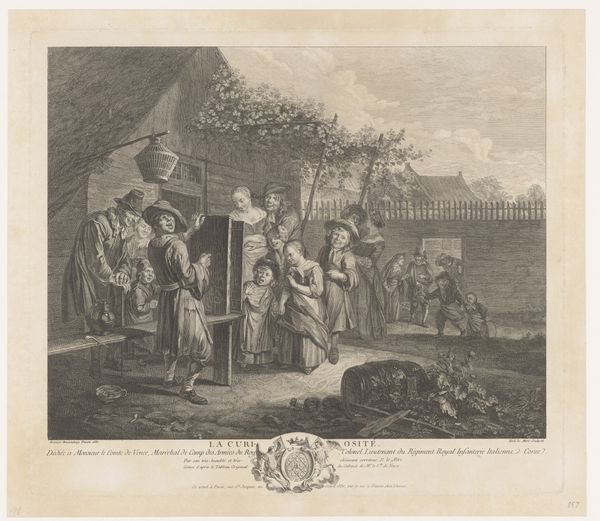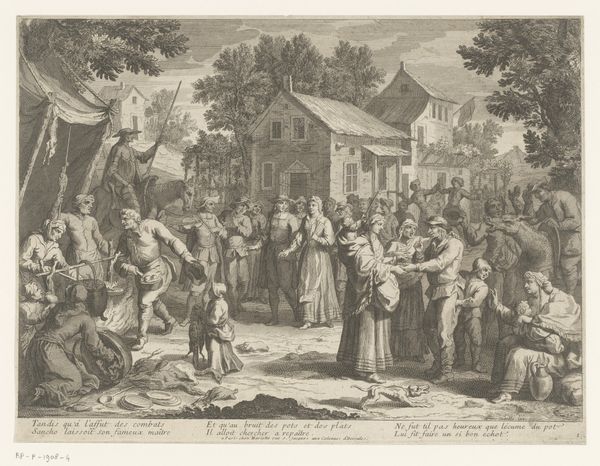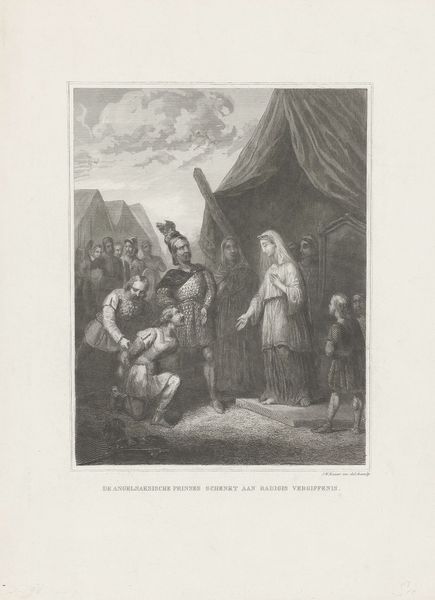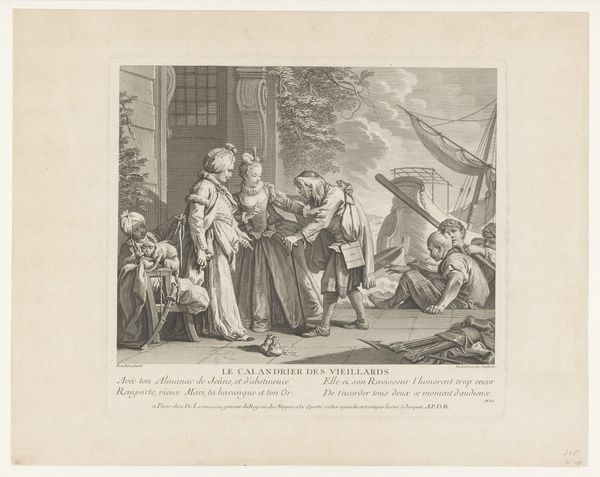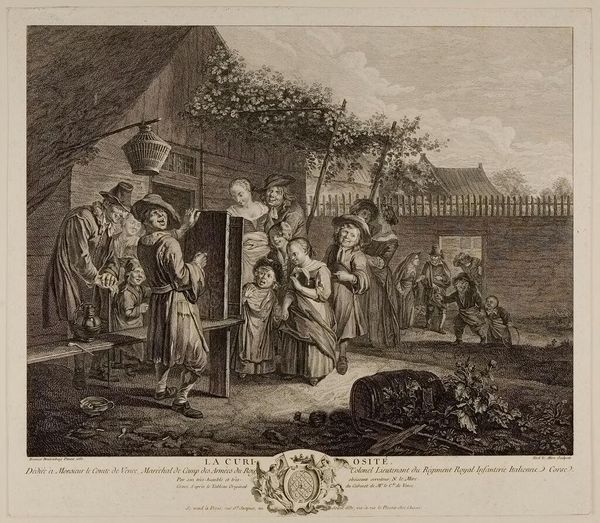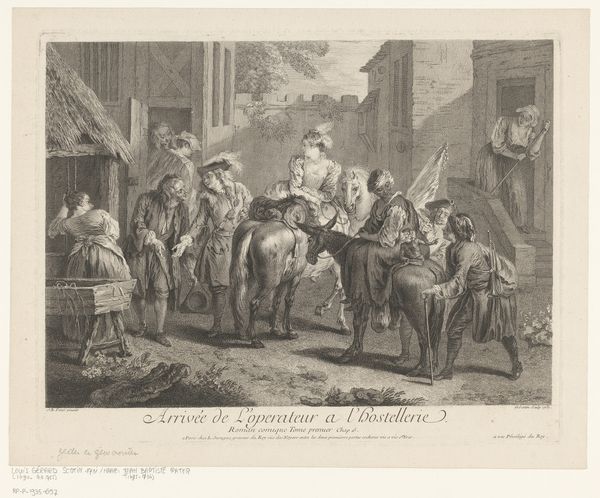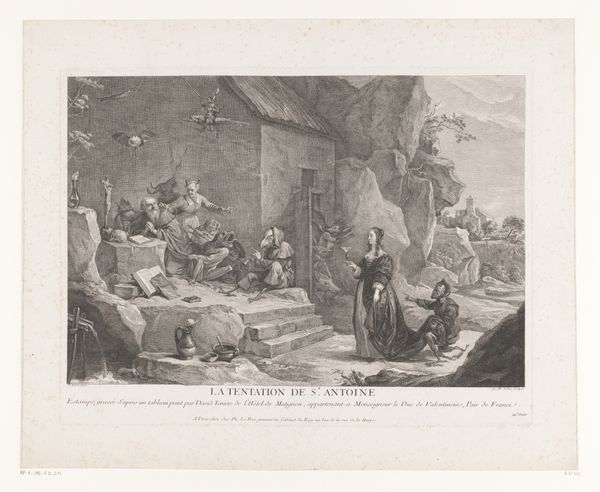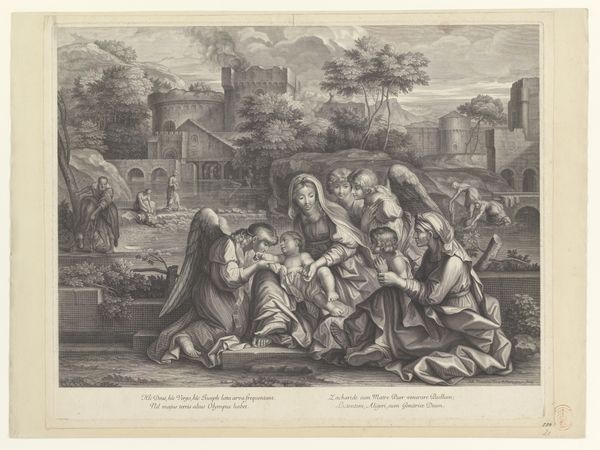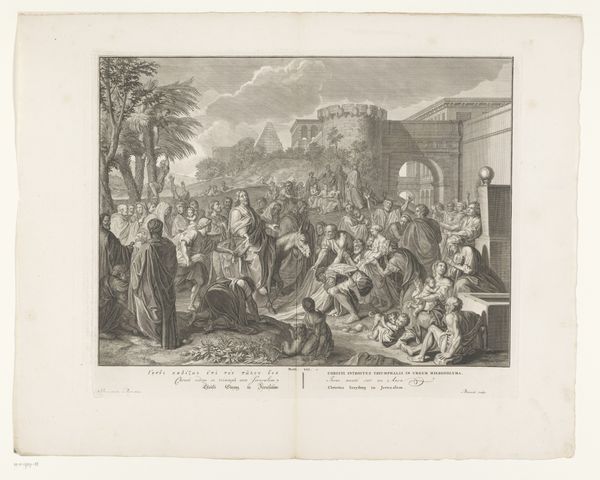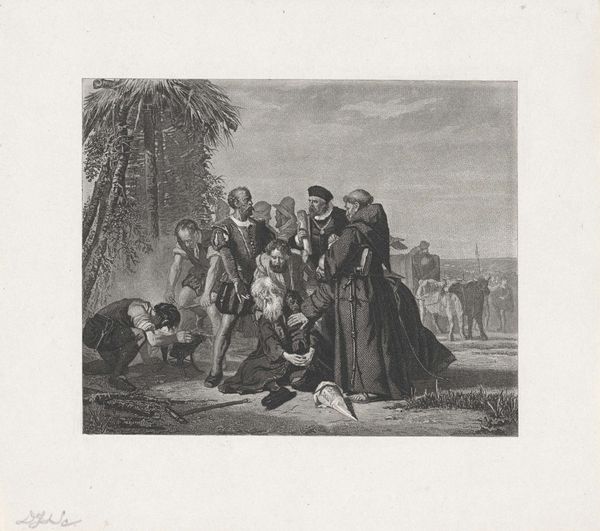
print, engraving
# print
#
old engraving style
#
landscape
#
figuration
#
history-painting
#
northern-renaissance
#
engraving
Dimensions: height 375 mm, width 378 mm
Copyright: Rijks Museum: Open Domain
Editor: Here we have Wilhelm Hecht’s "Stadsgezicht met de heilige familie en schenkers," an engraving, likely completed sometime between 1871 and 1907. The density of figures against that intricately detailed cityscape feels both crowded and carefully arranged. How do you see the composition working here? Curator: The engraving technique allows for incredibly fine lines and tonal variations, doesn’t it? Notice how the artist uses this to create depth, leading the eye from the foreground figures to the buildings behind, and ultimately to that distant, almost dreamlike landscape. It’s a sophisticated interplay of textures, with rough-hewn architectural facades and the intricate folds of drapery. Editor: It almost feels like two separate scenes layered on top of one another, a holy scene and a city view. What are your thoughts about the lack of blending of these two narratives? Curator: Precisely! That lack of blending creates a deliberate tension, a visual puzzle. The juxtaposition forces us to consider the relationship between the sacred and the secular, between the ideal and the real. Is one elevated above the other or is their relationship complementary? I wonder about the structure that contains that lack of transition. Does the artist consider it a successful solution? Editor: So you’re saying the success of the artwork really hinges on that specific tension between the realms, achieved through that careful arrangement of light, line, and space. Curator: Yes. And it's interesting to analyze what this dissonance might achieve. Think about what kind of conversation emerges because of the disjunction. Editor: It's been fascinating to consider how such formal qualities shape the very meaning of the work. Curator: Indeed, reflecting on these formal elements reveals complex artistic intentionality.
Comments
No comments
Be the first to comment and join the conversation on the ultimate creative platform.
